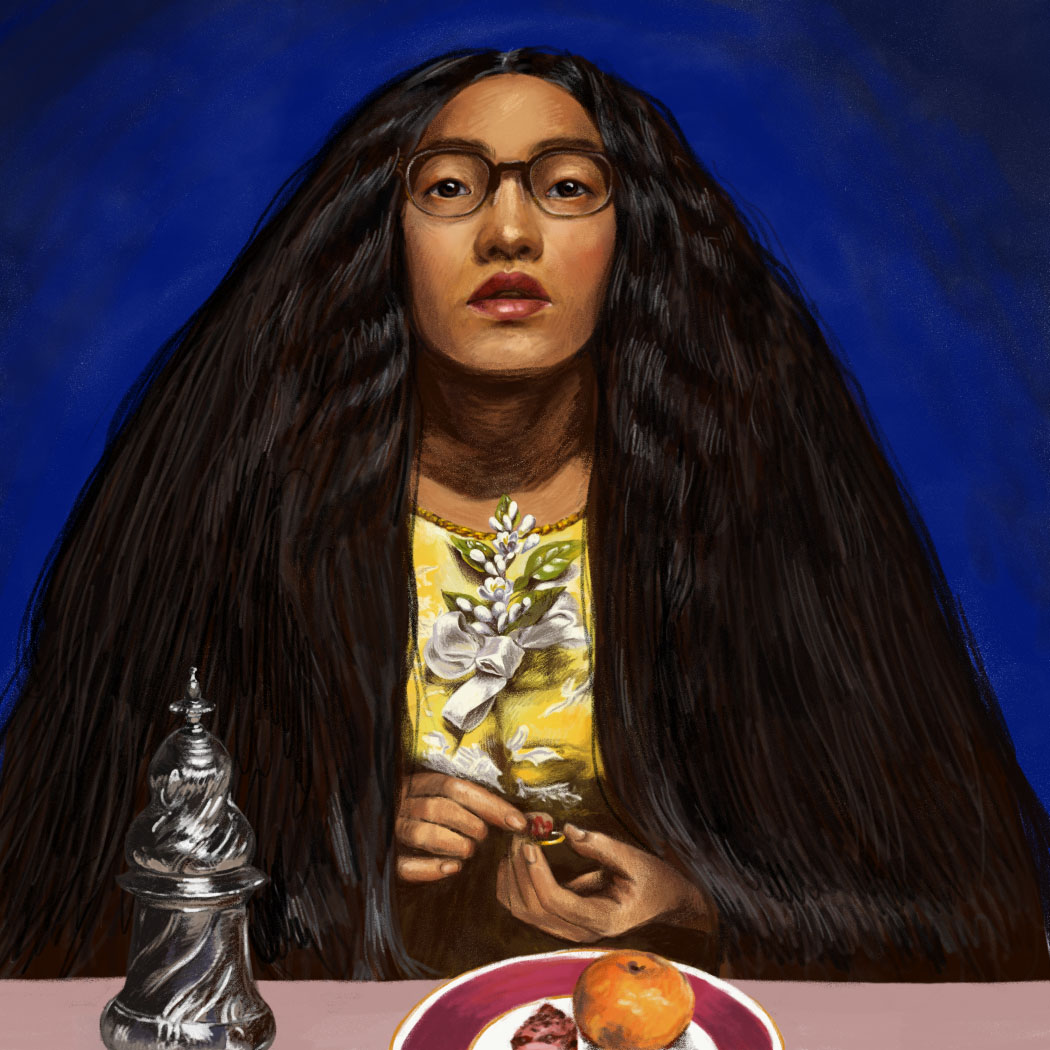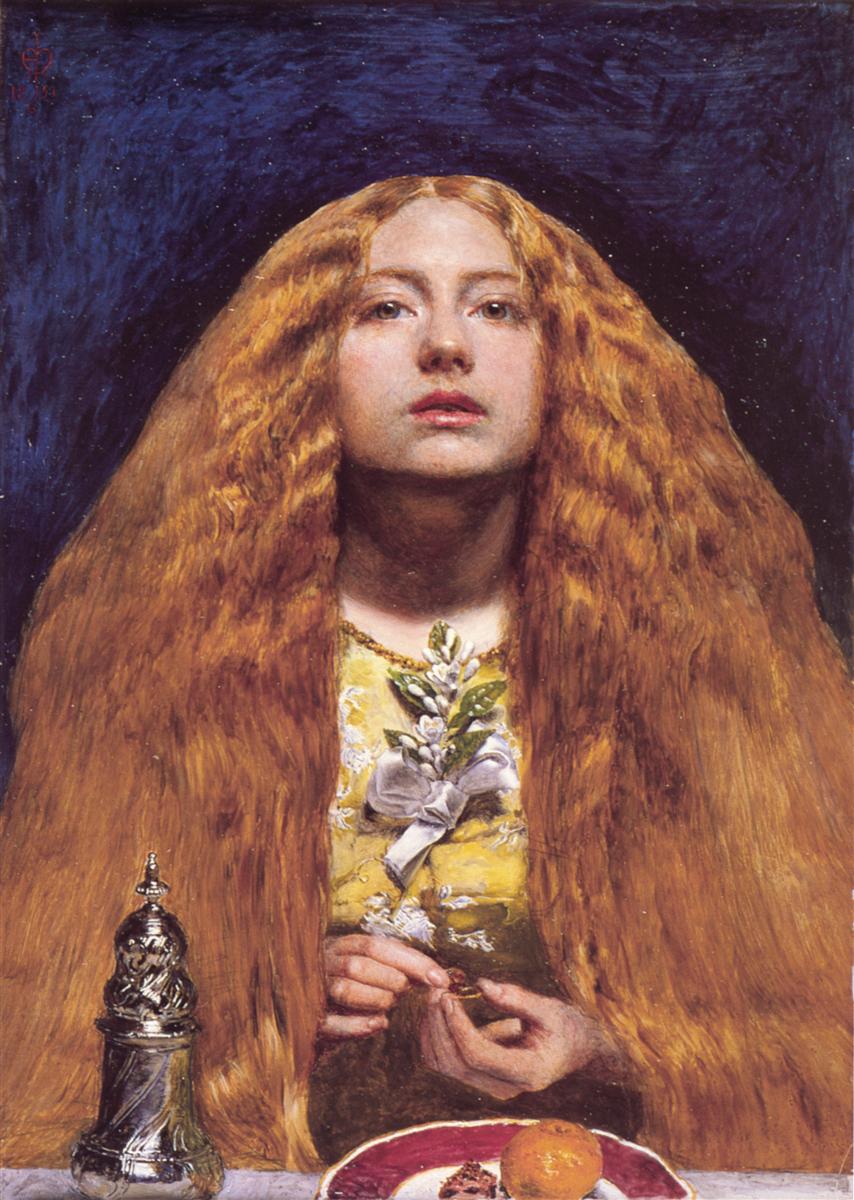71/100
The Bridesmaid
-
Artist
John Everett Millais
-
Year
1851
-
Culture
British
-
Date of Copy
For entries 71-80, I decided to try a new theme: focusing on facial likeness. I found 10 paintings that emphasized the face and decided to put time in to studying my own features.
This painting was super striking to start with. Anything compelling about my copy is fully because Millais made good choices in his. I regret the way I colored the hands in this one, they look more like gloves than human skin. Ah well, now I know better, and that's all I can hope for.
This depicts a young girl with a dreamy look on her face passing a piece of cake through a ring. There was a Victorian superstition that if you passed a piece of wedding cake through a ring nine times, you'd see a vision of your true love. She also is wearing a sprig of orange blossom, which were worn during weddings and symbolized purity. Of course, the thing that stands out the most is her huge cascade of hair.
John Everett Millais is the preeminent Pre-Raphaelite painter. The Pre-Raphaelite movement was a rebellious one, rejecting their art teachers' wisdom that Raphael was the pinnacle of Western art. In contrast, the Pre-Raphaelites emphasized emotional realism, observing from life in painstaking detail, and using the brightest colors they could. They loved literary allusions, Medieval aesthetics, and nature. They launched their movement by signing their paintings with the mysterious initials "P.R.B." for Pre-Raphaelite Brotherhood. Then they published a literary magazine with their manifesto. It all sounds very fun--if you are starting an artistic secret society with mysterious initials, please invite me.
Their biggest P.R.B. splash actually came from a Millais painting called Christ in the House of His Parents which depicted the holy family in a carpenter's workshop. The figures were un-idealized, showing wrinkles and sinewy muscles, and there were wood shavings everywhere. It caused huge controversy. Charles Dickens was one of the most vocal haters. He said that Mary was so ugly that she would stand out as the most hideous figure in the company of "the vilest cabaret in France, or the lowest gin-shop in England", and Jesus looked like a "wry-necked, blubbering red-headed boy in a bed-gown."
I know that the Pre-Raphaelites are known for a devotion to realism, but I have to say that I find many of their paintings overly sentimental and exaggerated (especially Millais, actually.) Their ladies often look either performatively upset, or utterly blank-faced. It's funny, at the time their critics found their work ugly and harsh, but my modern eyes see it as cloyingly sweet and romantic. How times change.
Reference image is from WikiArt. The original is now in the Fitzwilliam Musuem in Cambridge.

